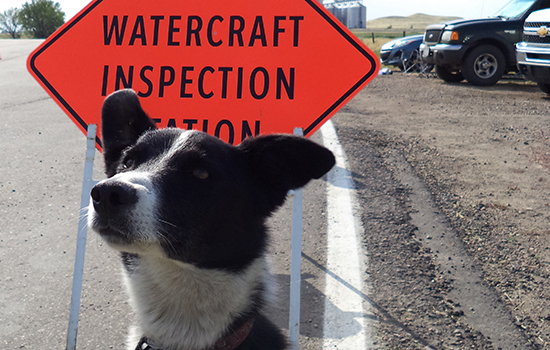As the Willard students learned, mussels can clog up pipes, reducing water access, and use the resources that native species rely on, edging them out of the ecosystem. How do we know if the mussel population is large enough to be a concern?
Heidi asked the students to image a nuclear power plant. Nuclear power plants rely heavily on the functioning of cooling systems. If mussels were introduced to the cooling system, the water flow would slow and heat up, rendering critical cooling processes ineffective. A small number of mussels would be disastrous.
More likely, mussels would affect hydroelectric power.
"Montana has some of the cheapest power in the US" because the Columbia Watershed has so many dams, Heidi pointed out. Mussels would slow the rate at which dams produce electricity, increasing power prices for all the residents receiving power from the Northwest.
The problem lies in the rapid reproduction rates of mussels. Mussel populations do not stay small for long, as the students recalled on my first visit. Mussels' ability to thrive in most any water body contributes to their designation as "invasive," and means that any number of mussels where they are not supposed to be is too many.
 |
Bar graph of ml of water filtered by
mussels in 1, 3, 8 hours |
 |
Chart of ml of water filtered by
mussels in 1, 3, 8 hours |
Heidi assisted the students in performing a small demonstration on the impact mussels have on water, aside from their physical presence. One student put a scoop of rich dirt into a plastic soda bottle to simulate the detritus that many water species extract nutrients from.
 |
| Photo courtesy of Bailey Roseveare |
"Mussels filter how much water per day?" she asked.
"One liter [each]," a student answered. The student poured one liter of water into the bottle to represent the water column. Then Heidi held up a contraption with a small canister attached to a screw cap.
"Specialized gills are what these cotton balls are going to represent," Heidi explained as she stuffed two cotton balls into the canister. After attaching it to the bottle, Heidi set out a clear glass jar and began to squeeze the bottle. The water was forced into the contraption and filtered by the cotton ball gills.
"What do you notice about the water in the jar?" she asked.
"It's clear."
"It's pretty clean."
"Is that a good thing or a bad thing?" Heidi followed up.
"Bad," the students agree. One clarified that it was bad because the water had no nutrients left in it.
"What's happening to the gills?" Heidi took the cotton balls out, now brown from collected soil.
"They're getting dirty," a student replied.
"They're filtering nutrients," Heidi reminded them.
This realization that clear water was unhealthy contrasted the students' initial expectations from the week prior. They wrote that clear water was cleaner, which is good for our drinking water. They figured cleaner, clearer water was less likely to make humans and animals sick. Now, however, they understood that the detritus that makes water unappealing to us is actually an important food source. It also maintains ecosystem balance, as they would learn next.
"The mussels create an environment unsuitable for living," a student concluded.
"Or we could call it sterile," Heidi elaborated.
In addition to removing helpful material floating in the water, mussels can increase water toxicity. Mussels produce pseudofeces, or "fake poop".
If there's anything they don't want, the dump it out," Heidi explained. This means "they spit out the toxic stuff."
The clear water column expands the literal zone of bodies of water. The litoral zone is the area where sunlight can reach the bottom of the water column. This is the section where plants can grow, as they utilize the sunlight for photosynthesis. A larger litoral zone allows more plants to flourish.
"What happens [with plants] at the end of the growing cycle?" Heidi asked.
"They die."
"They die and release phosphorus, perfect conditions for algae blooms," Heidi confirmed. If there is a larger litoral zone, more plants grow, and more plants die, releasing more phosphorus. Algae blooms make water anaerobic, depleting the oxygen available and thus making it difficult for creatures that need oxygen, such as fish and certain bacteria, to survive. This anaerobic state is conducive to the growth of botulism, a toxic bacteria.
The class read over an
article in The Oakland Press about bird deaths that Heidi had passed out.
What do mussels have to do with birds? I wondered. Botulism contaminates the food that loons and other waterfowl eat, entering their nervous systems and shutting down their bodies. The article went on to list the numbers of loons, ducks, gulls, and other birds found dead on the shores of water infested with mussels. It provided a stark image of the chain of effects mussels have on an ecosystem.
Heidi connected the article back to Montana, noting the Montana has the largest loon population west of the Mississippi. If mussels made it to the Columbia Watershed, it would devastate this valued population.
We revisited the pros and cons of having clear water in aquatic ecosystems, again emphasizing how our assumptions of human needs do not always match with the needs of other organisms.
"Wow, and they're only this big, they're tiny!" a student expressed amazement at the damage that can be caused by a creature the size of a fingernail.
Watching the students grasp the interconnectedness of ecosystem elements and the impacts small changes can have gave me hope that early education like AIS will lead to better environmentally-informed citizens in the future.
-Cassie Sevigny
AmeriCorps Team Member
Media Coordinator














































